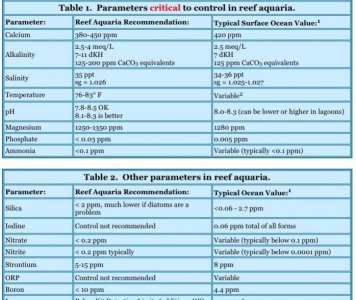Step one: Get your water to the following parameters: alkalinity 8.3, calcium 420, magnesium 1300, salinity 1.024 to 1.026 and STEADY, day to night: if you don't have an ATO, get one. If you don't have tests and supplements to maintain these things, get them.
Step two: while looking at corals, decide whether the thing has a stony skeleton or not. If not, it's a softie. If yes, it's a stony. If it's a stony, you're going to have to feed it calcium once it wakes up and starts eating. If it's a zoa, you're going to need to put it in an observation tank to see whether nudibranch (pest) eggs hatch---they will survive a dip that kills the adult pest. Softies only need the calcium refresher that comes in water changes. Hint: buy your corals from places that don't pipe water from fish tanks into the coral tanks---this keeps fish pests from hitchhiking in. But if you don't take that precaution, build your reef for 12 weeks from last coral addition before putting a fish in, and you've passed the 72 day fallow period anyway, with never a fish involved. You CAN have inverts, shrimp, etc, no problem. Same rule applies.
Suggestions for species for beginners: zoas, button palys, leathers, mushrooms in the softie realm. In stony, go for hammer, candycane, acans.
Step three: dip the coral, whether stony or softie. This kills coral pests. If softie---that observation period is a must. Use a magnifying glass and strong light.
Step four: put new coral on the bottom of your tank and raise it upward day by day until you hit a point the coral is happiest. That's where it belongs. When you find that spot, putty or glue it in place to prevent wobbles: corals hate to wobble.
Coral that lands in nice water will open up and extend fully, but it takes time. They may expel water, shriveling, and suck it in again to expand to handle a slight water change, but if they expel water and stay that way, they're not happy---test the water. Because of this trick, they are hardier about bad water than fish are---but don't test their endurance. Fix it.
Hint: if you built your reef up before getting fish, dipping all corals, you would not have ich problems---until you start with fish. By that time, you should be expert enough in water management that dealing with fish is a snap. Corals tell you hour to hour how happy they are. Fish don't: they just tough it out until they turn up dead. Hardy corals are in fact EASIER than fish for starters: they make you learn the things that will keep your fish healthy, and complain every time you get it wrong. Go either softie or lps stony. Stay away from sps stony while learning.
Step two: while looking at corals, decide whether the thing has a stony skeleton or not. If not, it's a softie. If yes, it's a stony. If it's a stony, you're going to have to feed it calcium once it wakes up and starts eating. If it's a zoa, you're going to need to put it in an observation tank to see whether nudibranch (pest) eggs hatch---they will survive a dip that kills the adult pest. Softies only need the calcium refresher that comes in water changes. Hint: buy your corals from places that don't pipe water from fish tanks into the coral tanks---this keeps fish pests from hitchhiking in. But if you don't take that precaution, build your reef for 12 weeks from last coral addition before putting a fish in, and you've passed the 72 day fallow period anyway, with never a fish involved. You CAN have inverts, shrimp, etc, no problem. Same rule applies.
Suggestions for species for beginners: zoas, button palys, leathers, mushrooms in the softie realm. In stony, go for hammer, candycane, acans.
Step three: dip the coral, whether stony or softie. This kills coral pests. If softie---that observation period is a must. Use a magnifying glass and strong light.
Step four: put new coral on the bottom of your tank and raise it upward day by day until you hit a point the coral is happiest. That's where it belongs. When you find that spot, putty or glue it in place to prevent wobbles: corals hate to wobble.
Coral that lands in nice water will open up and extend fully, but it takes time. They may expel water, shriveling, and suck it in again to expand to handle a slight water change, but if they expel water and stay that way, they're not happy---test the water. Because of this trick, they are hardier about bad water than fish are---but don't test their endurance. Fix it.
Hint: if you built your reef up before getting fish, dipping all corals, you would not have ich problems---until you start with fish. By that time, you should be expert enough in water management that dealing with fish is a snap. Corals tell you hour to hour how happy they are. Fish don't: they just tough it out until they turn up dead. Hardy corals are in fact EASIER than fish for starters: they make you learn the things that will keep your fish healthy, and complain every time you get it wrong. Go either softie or lps stony. Stay away from sps stony while learning.
Last edited:

